Hops Should Be Harvested At Just The Right Time Depending On Their Use – Here’s How


Elizabeth is a Permaculture Garden Designer, Sustainability Consultant and Professional Writer, working as an advocate for positive change. She graduated from the University of St. Andrews with an MA in English and Philosophy and obtained a Diploma in Applied Permaculture Design from the Permaculture Association.
Reviewed By DAN ORI

Dan has over 27 years’ under his belt caring for plants and gardens. Working as a Horticultural Instructor and Consultant, he draws on a diverse range of experience that includes working as a Head Gardener, Tree Surgeon, Garden Centre Trouble Shooter, and writer of academic papers. Dan has a Level 3 Diploma in Horticulture and is currently a candidate for the RHS’s most prestigious award – The Master of Horticulture.
Contributions From MIKE BARKER

Mike Barker is an expert with 30 years of experience growing hops and the Owner of the specialist nursery Essentially Hops, based in Canterbury, UK.
IN THIS GUIDE
HOPS GUIDES
Harvesting
Varieties
Hops are climbers of hedgerows and sunny woodland edges that grow throughout much of the UK.
They have been used for hundreds of years in brewing beer and also have several other applications that make them an enduring favourite among many growers.
Whether you harvest hops that you have grown in your own garden or are looking to harvest plants growing wild in your area, there are certain things that you will need to know.
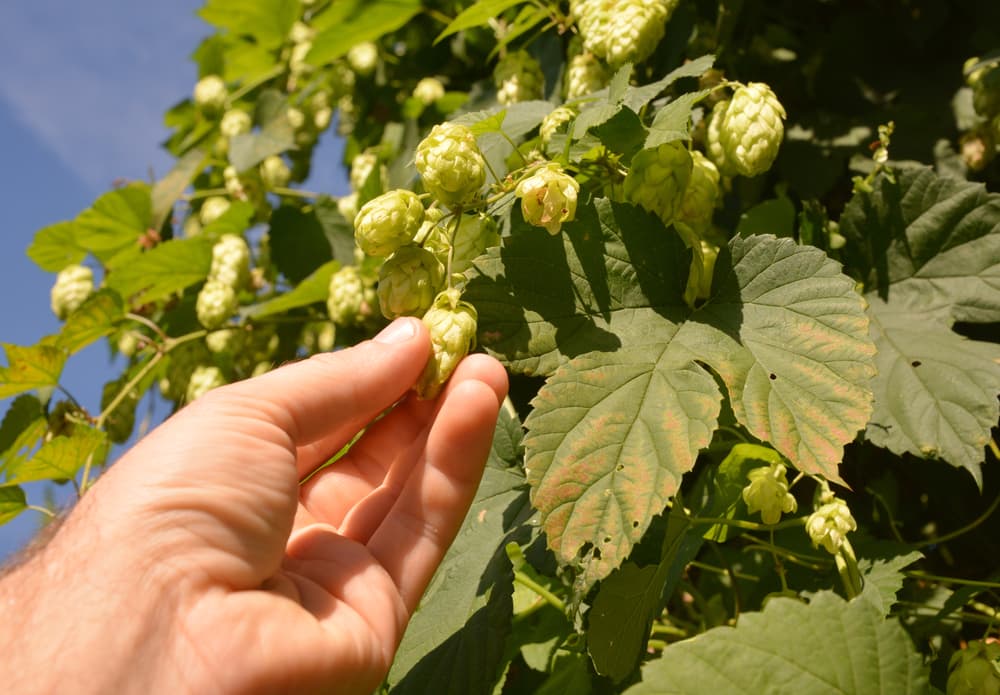
I list all of the most important considerations for harvesting below.
| Difficulty | Medium |
| Equipment Required | Secateurs, gardening gloves |
| When To Harvest | Early autumn |
Why Harvest Hops?
Hops are harvested for a range of different reasons.
You might harvest the young leaves and shoots early in the season for cooking, as they are said to have a delicious flavour.
The young leaves may be eaten in salads and the fleshy rhizomes of hops are also sometimes harvested and eaten.1Humulus lupulus. (n.d.-b). PFAF Plant Database. Retrieved April 27, 2023, from https://pfaf.org/User/plant.aspx?LatinName=Humulus+lupulus
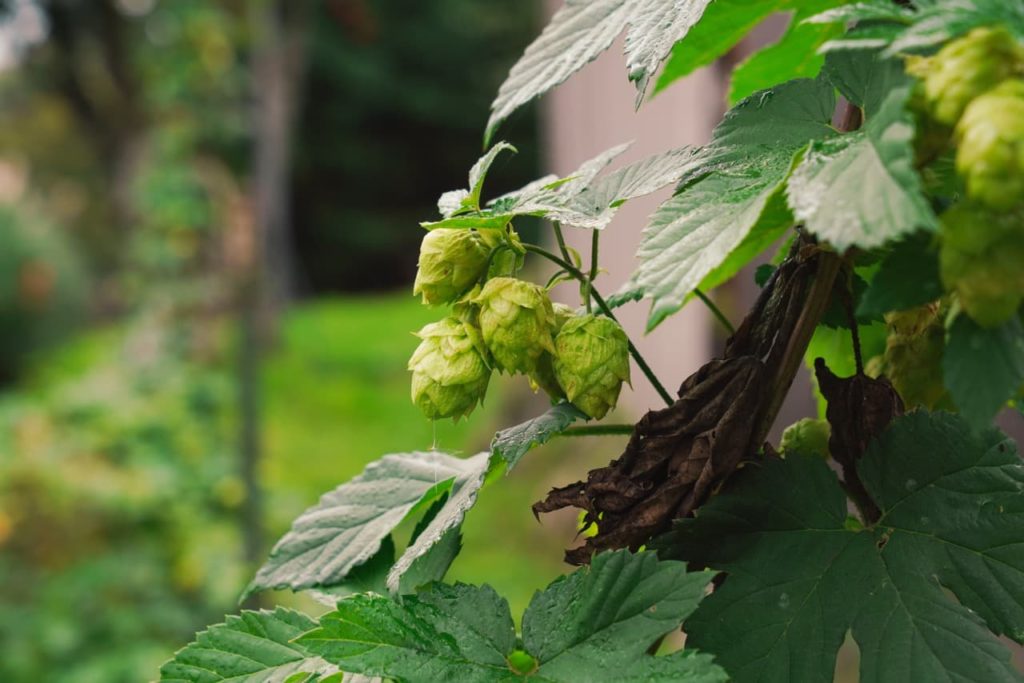
Additional uses also include a brown dye which can be derived from the leaves and flower heads and plant fibres which are taken from the stems and used to make a coarse fabric or paper.2Calabretta, A. (2020, December 10). A Thread Of Sustainability. Textile World. Retrieved April 27, 2023, from https://www.textileworld.com/textile-world/features/2020/12/a-thread-of-sustainability/
However, the main reason for harvesting Humulus lupulus is for the dried flower heads which are used to brew beer and make tea.3Goldman, J. (2016, August 19). Use Hops Tea to Enhance Flavors in Your Beer. Craft Beer & Brewing. Retrieved April 27, 2023, from https://beerandbrewing.com/use-hops-tea-to-enhance-flavors-in-your-beer/
When To Harvest Hops
If the young leaves and shoots are to be eaten, these should be harvested before the end of May.
The main harvest of the cones should wait until the end of summer or early autumn, once they have had the chance to dry a little on the vine, as Mike Barker from Essentially Hops explains:
“Harvest hops for decoration when they look their best, which is usually the end of August, beginning of September,” says Mike.
Not all of the cones will ripen at exactly the same time, so you can harvest over a longer period in order to maximise yields.

However, most of the time, hop vines are cut when most of the cones on them are ready to harvest.
When the time comes to harvest hop cones, they should feel light, firm and slightly sticky to the touch.
If they are still damp and squashy, they are not yet ready to harvest.
They should be a lighter green than they were earlier in the year.
A ripe cone will also leave a yellowish residue on your fingers when handled.
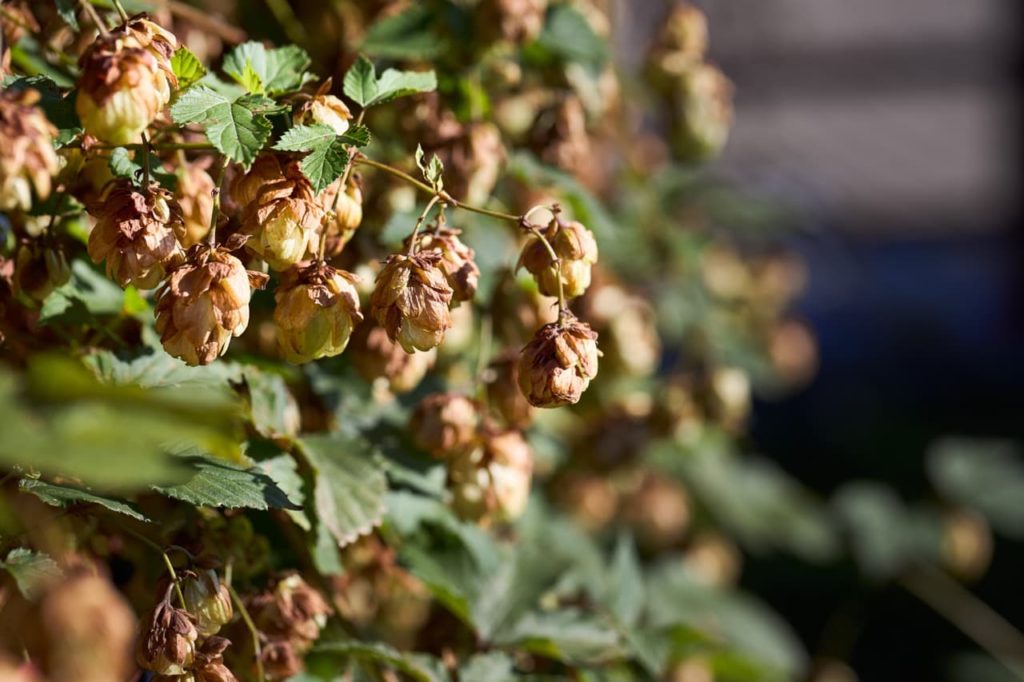
“Hops for brewing need the cones to have matured,” explains Mike.
“When pressed, the cone should be quite firm and when the cone is split, the seed should be a dark colour.
“The longer hops are left on the plant the better, but if they’re left too long, they will blow away when dried or the colour will deteriorate, particularly in the wind and rain.”
Another way to tell when hop cones are ready is by smelling them.
The odour of the cones will alter from a grass-like fragrance to one that is more distinctive and aromatic.
The Harvesting Process
Once a good number of cones are ready to harvest, these can simply be plucked from the vine.
However, since hops can grow too high to reach, the plants are usually chopped to the ground and the cones are then retrieved from the felled vine.
Even though they will have dried partly on the vine, the hop cones then need to be dried fully once harvested or they will rot.
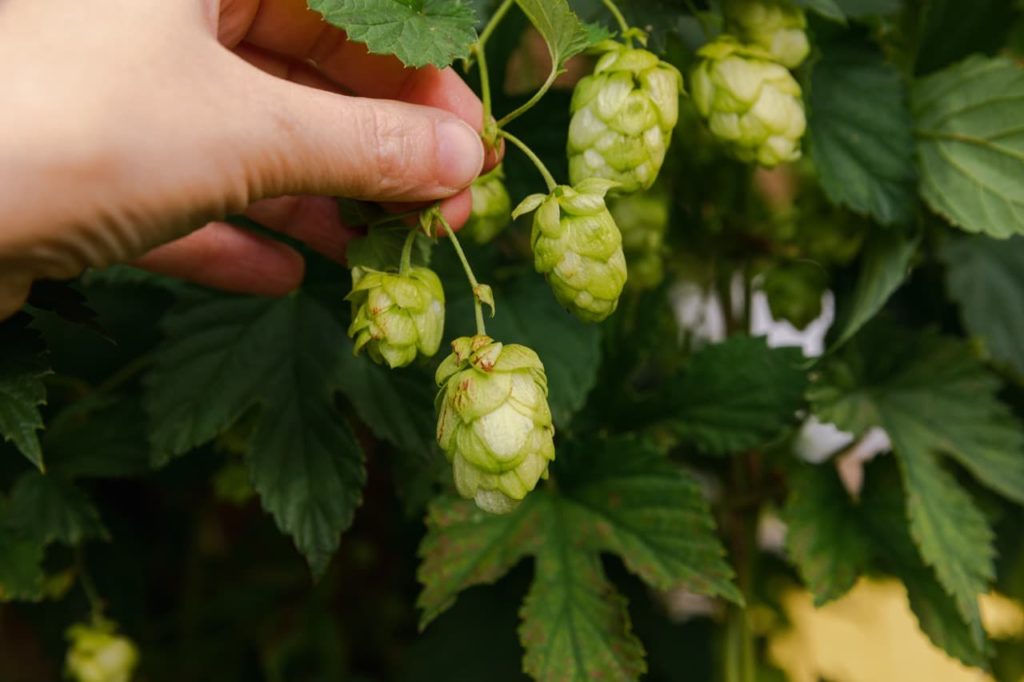
They should be left on the vine and hung up to dry in a dark, well-ventilated space in order to allow moisture to escape from them.
“Hang them straight up in the location you want and just let them dry in situ,” says Mike.
It is important to make sure that the moisture leaves the hop cones or they can very quickly begin to rot.
If the humidity is high, you can also dry the cones on very low heat (less than 60°C) in an oven or in an electric dehydrator.
Storing Harvested Hops
“Hops should be dried and then conditioned to a final moisture content of 8-10%,” shares Mike.
“Drying hops is an art form which will vary with every different drying system.
“Amateur growers and dryers may not require the hops to be compacted into bales or pockets, which is what is done by commercial dryers to reduce bulk.”
However, at home, this is not generally a stage that we need to be concerned with.
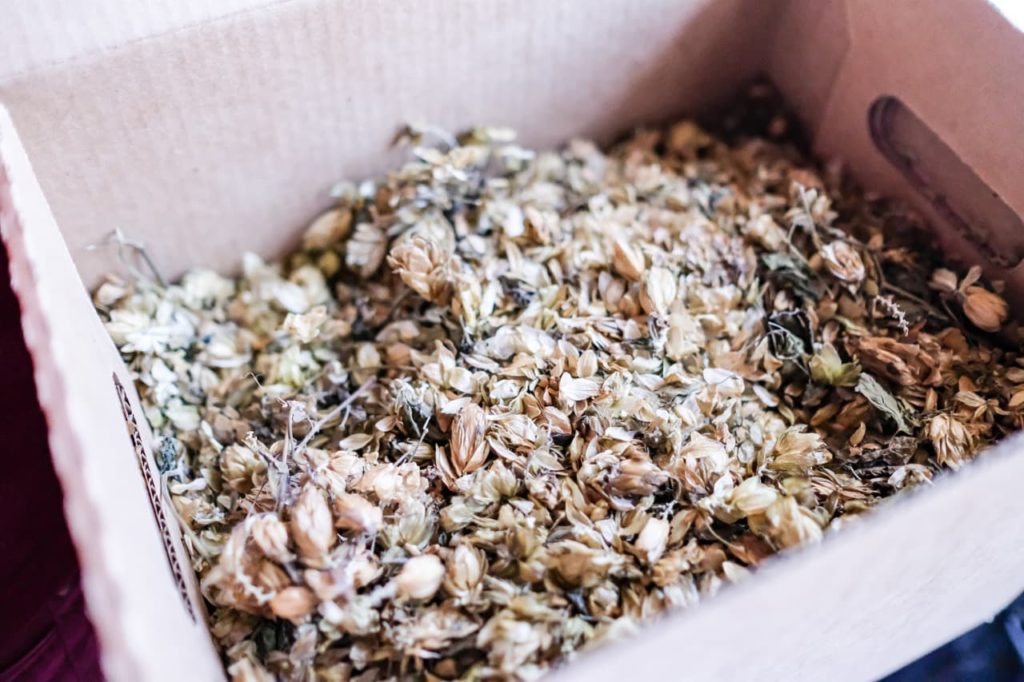
You can store the hops that you have harvested and dried simply by placing them into an airtight bag or other container and putting them into the freezer until you wish to use them.
In a sealed container in the freezer, the hops should remain fresh for a year or even more.
“A note of caution to parents and pet owners, when drying and storing hops, keep them out of reach from these often curious nibblers, although they should be fine to brush against in storage and in the garden,” shares Master Horticulturist Dan Ori.
The basic outline above should help you to understand the basics of hop harvests and how to successfully use any hops that you grow in your garden.
References
- 1Humulus lupulus. (n.d.-b). PFAF Plant Database. Retrieved April 27, 2023, from https://pfaf.org/User/plant.aspx?LatinName=Humulus+lupulus
- 2Calabretta, A. (2020, December 10). A Thread Of Sustainability. Textile World. Retrieved April 27, 2023, from https://www.textileworld.com/textile-world/features/2020/12/a-thread-of-sustainability/
- 3Goldman, J. (2016, August 19). Use Hops Tea to Enhance Flavors in Your Beer. Craft Beer & Brewing. Retrieved April 27, 2023, from https://beerandbrewing.com/use-hops-tea-to-enhance-flavors-in-your-beer/
